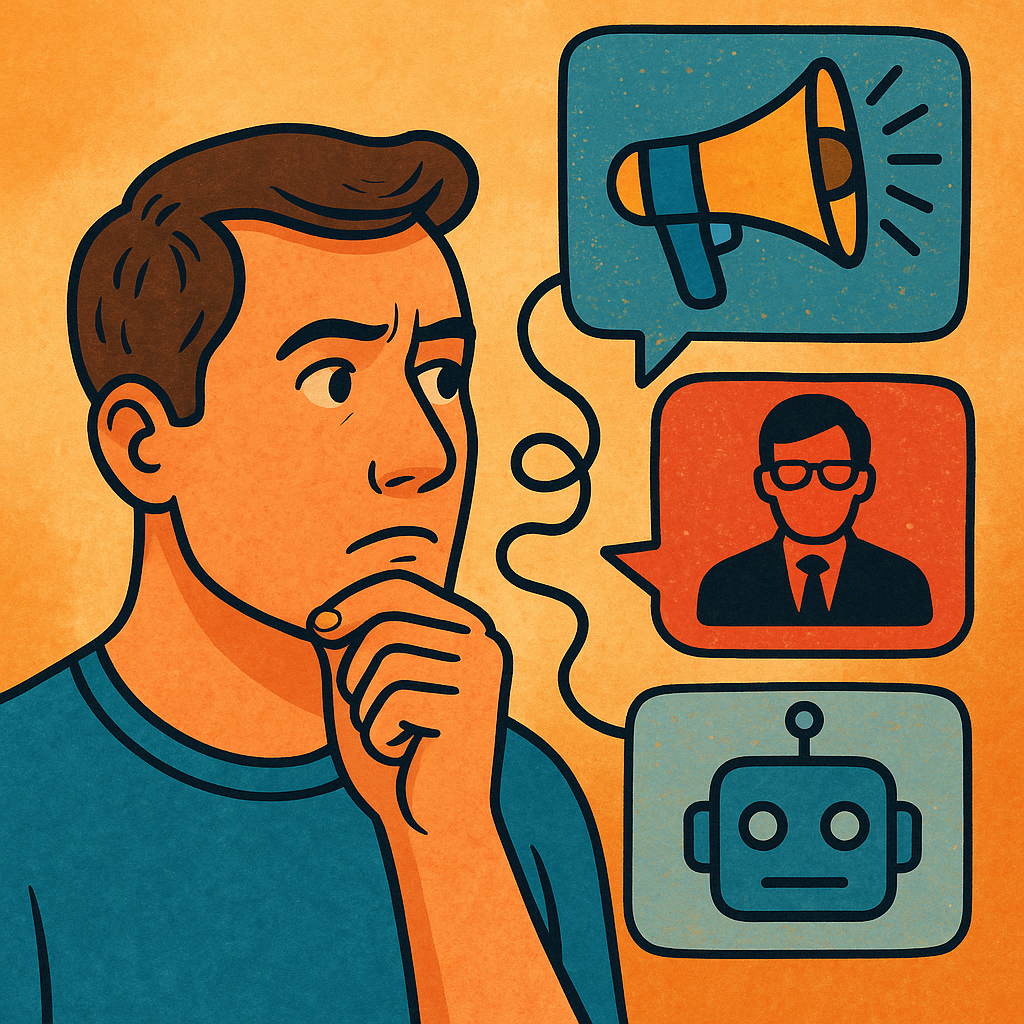Why we trust some sources without knowing why is rooted in reflexive mental shortcuts. From authority bias to repetition illusions, our brains often take the easy route. Discover what’s happening—and how to avoid blind trust.

What Drives Unconscious Trust?
1. The Illusory Truth Effect
When a statement is repeated, it becomes familiar—and familiarity often translates into perceived accuracy. The “illusory truth effect” shows that even false information can feel true after repetition, even if you once recognized it as false.
2. Confirmation Bias
We naturally seek and trust information that confirms our preexisting beliefs. This “myside bias” means we’re more inclined to accept sources that echo what we already think.
3. Authority Bias
We assume that authority figures are trustworthy—even when their knowledge isn’t relevant. It’s why recommendations from experts carry weight, regardless of context.
4. Motivated Reasoning
We evaluate facts through emotional lenses. If a source aligns with our identity or beliefs, we’re more likely to accept it—regardless of objective accuracy.
5. Filter Bubbles and Echo Chambers
Algorithms on social media and search engines feed us content aligned with our views. Over time, this repetition reinforces trust—even without evaluating facts.
H2: Why It Matters in Today’s Information Landscape
H3: Deepfakes and AI-Generated Misinformation
AI-generated content (deepfakes, LLM text) is becoming more convincing. Algorithms reward emotional content, causing false information to spread faster—even when deceptive. Youth experts warn that critical thinking must adapt ft.com.
H3: Warnings Can Erode Trust
Studies find that pop-up banners warning about unreliable sources may backfire—making users distrust even accurate information. This shows how fragile trust can be when heuristics misfire.
H3: Political Polarization
A 2025 Pew survey found stark divides: Republicans and Democrats trust vastly different media sources. Only Forbes and WSJ appear trusted by both groups. That’s a reflection of trust shaped by ideology—not accuracy.
H2: Practical Guide — How to Trust Smarter
If you want to avoid blind trust, follow this roadmap:
- Recognize cognitive triggers
Learn about these shortcuts—repetition, authority, familiarity—so they don’t control your trust reflex. - Pause before reacting
Take a moment before accepting information. Slowing down lets you question familiarity or emotional hooks. - Engage in lateral reading
Instead of staying on a single page, open new tabs to cross-check claims. This is standard fact-checker practice. - Check the author and agenda
Do they have credentials? Might they benefit (financially or ideologically) from pushing a claim? - Use prebunking tools
Psychology-based “prebunking” interventions—videos or games exposing manipulative tactics—reduce susceptibility to misinformation. - Expose yourself to diverse perspectives
Engage with sources across the spectrum—even those you disagree with. That weakens filter effects and builds nuance.
H2: Emerging Trend — Trust Heuristics in AI Contexts
A 2024 study of young users in India and the US shows they apply the same heuristics they use offline when encountering AI-generated content. They gravitate toward convenience, but often sacrifice accuracy.
Why this matters:
- We rely on “sense of familiarity”—even with AI text.
- Authority bias extends to AI systems—people trust chatbot-generated summaries when framed as knowledgeable.
- This trend heightens the risk of trusting deceptive AI explanations.
Tips to adapt:
- Verify AI outputs with multiple sources.
- Question explanations—are they logical or manipulative?
- Treat AI as one input—not authority.
H2: Case Study — AI-Generated “Evidence”
In July 2024, researchers tested AI systems giving deceptive explanations. These were found more convincing than honest AI—even though logically flawed.
- Why it’s alarming: Deepfake reasoning gets internalized, not just surface facts.
- Solution: Teach users logical reasoning—spotting flawed causal links within explanations.
Key Takeaways
- Our brains use shortcuts that make us trust without knowing.
- Modern technology exploits these—social feeds, AI-generated content, fake sources.
- To trust wisely, you need awareness, speed bumps, cross-checks, and diverse context.
In a digital era, understanding why we trust some sources without knowing why isn’t optional—it’s essential. It empowers you to keep the trust you deserve—and question the rest.
References
- Newman, E. J. et al. Illusory truth effect: Repeating falsehoods increases believability. Wikipedia (2025)
- Darley, J. M. & Gross, P. H. Confirmation bias and selective exposure. Wikipedia (2025)
- Xu, R. et al. New contexts, old heuristics: Trust in genAI content, arXiv (2024)
- Danry, V. et al. Deceptive AI amplifies misinformation, arXiv (2024)
- Social science studies: Authority bias overview, Wikipedia (2025)
- Nature study: Alert banners reduce trust in accurate info (2024)
- Pew survey: US partisan media trust divide (2025)
- FT: Deepfakes and misinformation fighting (June 2025)






